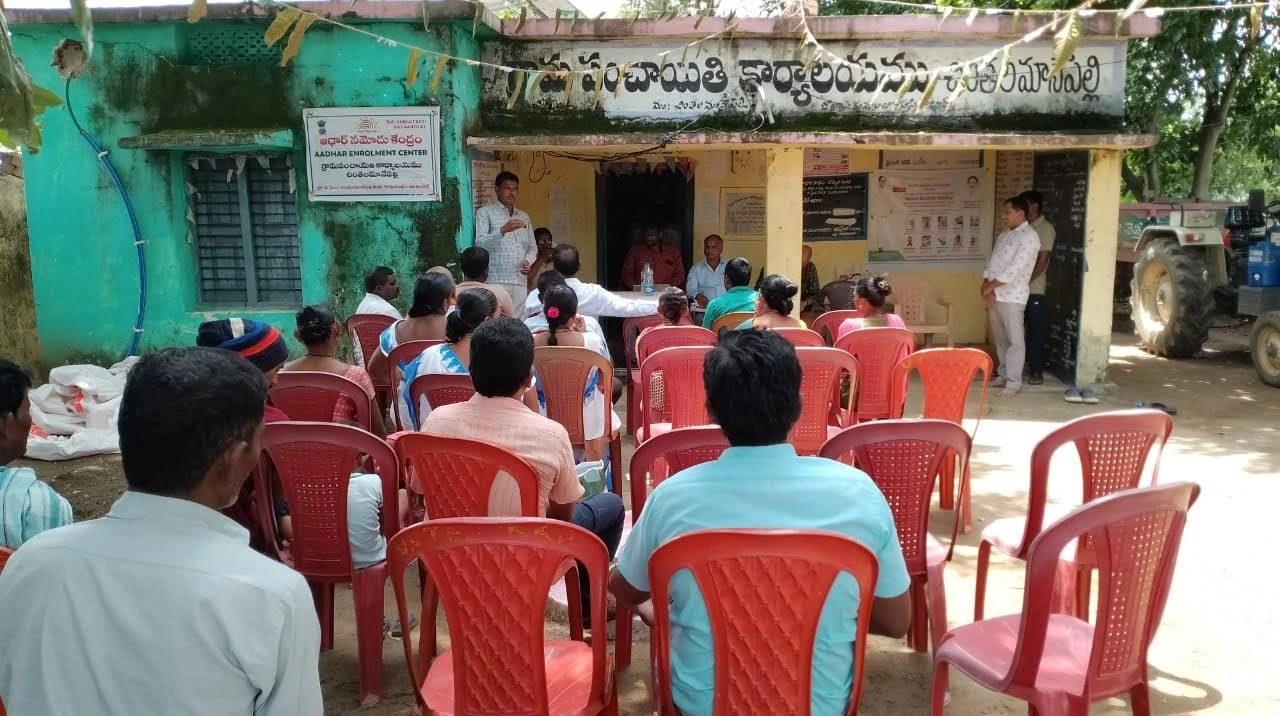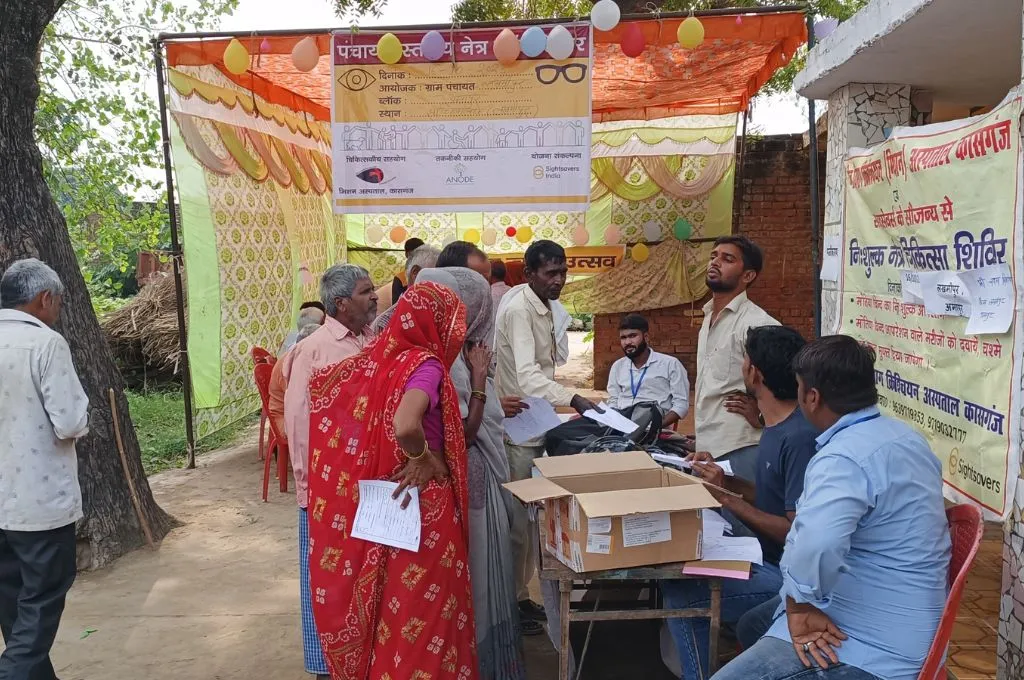In September 2022, the Food Ministry of India announced their decision to make millet products available across their canteens. In anticipation of 2023, the International Year of the Millets, the ministry was now going to serve healthier snacks such as ragi biscuits, laddoos, and millet chips during meetings. Millets were also going to now be used as the main grain in preparing dosas, idlis, and vadas offered in the canteens.
Over the last couple of years, initiatives aimed to bring millets back into our diets, and therefore, in the fields, have been in full swing. No longer perceived as an inferior coarse grain, millets are now considered to be planet-friendly, and nutritious. The recent focus has very much been on altering the behaviour of urban consumers who can afford to buy these products. But how is the rest of India to eat millets then, especially given its current price points, and accessibility?
This is where India’s Public Distribution System (PDS), with its scale and vast network of food distributors, can play a role in bringing millets to the masses. By controlling the affordability of essential products such as grains and pulses, the PDS influences how people eat, and what they choose to eat. Recognising the nutritional value of millets and the importance of supporting millet growers, the government of India has begun bolstering production and distribution of millets through public systems.
In Odisha, WASSAN (Watershed Support Services and Activities Network), in partnership with the state government, is working to reintroduce millets into people’s diets through already available public structures such as the PDS and Mid-day Meal Scheme.
“A demand for millets can’t be created solely through value-added products catered to urban consumers,” says Ashima Chaudhary, formerly the program manager at WASSAN, “It has to be done through bulk consumption for the masses.” According to her, there has to be more proactive encouragement of the bulk consumption of millet grains, like what was done for rice and wheat in the past.
At the moment, only ragi (finger millet), jowar (sorghum), and bajra (pearl millet) are procured by the government, and made available through the PDS. Minor millet varieties such as little millet are being considered for inclusion in the PDS in Odisha and Madhya Pradesh, as well as Telangana and Andhra Pradesh. However, initiatives to include minor varieties are being carried out as pilots by local NGOs, and have not been incorporated into state policy yet.
Before the conversation around including minor millets in public distribution surfaced, states like Karnataka, Odisha, Telangana, and Meghalaya had already begun distributing single-coated millets—mostly ragi—at PDS outlets on a pilot basis. Tamil Nadu has only recently begun expressing an interest in-state millet mission; in the select districts of Dharmapuri and Nilgiris, ragi is available in fair price shops on a pilot basis.
The Karnataka government has been striving to make millet varieties more accessible through the PDS, especially given that ragi and jowar are commonly consumed in different belts of the state. However, the realities of executing this through the state’s millet mission, led by MLA Krishna Byregowda, have been far more complex.

Although subsidised, millets are still too costly
The National Food Security Act, 2013 (NFSA) insists that eligible households are to receive 5 kg of foodgrains per person per month, with rice at Rs. 3 per kg, wheat at Rs. 2, and coarse grains at Rs.1; millets are considered to be coarse grains. Millets—largely ragi—were suddenly being mainstreamed and made cheaper than rice through the NFSA.
In 2019, the Odisha government began providing ragi at a subsidised rate in seven districts (Gajapati, Kalahandi, Kandhamal, Koraput, Nuapada, Malkangiri, and Rayagada). In six of these, cardholders would now be able to buy 1 kg of ragi for Rs. 1 every month. Only in Malkangiri district, the government provided 2 kg of ragi at Rs.1 per kg, due to more widespread consumption in the area. Chaudhary says that these prices hold true for Odisha today as well. By making ragi affordable and accessible through fair price shops, the Odisha government is effectively beginning to connect PDS beneficiaries to grains beyond rice and wheat.
Although the push for coarse grains such as ragi has been initiated in policy, its implementation reflects a different reality. While millets have been subsidised and made available through the PDS, rice remains cheaper in most states.
Lakshmi Narayanan from the Keystone foundation, which works with indigenous communities in the Nilgiris biosphere, observed a similar pattern during his fieldwork in the Pillur region in the Nilgiris district in Tamil Nadu. He says, “Although ragi is available in fair price shops, it still costs more than rice which is available for 3-5 rupees per kg and free of cost for tribal communities.”
Narayanan shares that before the Covid-19 pandemic, families in non-urban areas in the Nilgiris would grow their own ragi, eating it with rice. During the pandemic though, unable to purchase ragi seeds and farm them, beneficiary households became entirely dependent on the rice provided in the PDS.
The general health of tribal communities in the Nilgiris has deteriorated in the past five years, and they attribute this to excess rice consumption.
Even now, fair price shops in Tamil Nadu provide only ragi millet at a subsidy. Other millets indigenous to the region, such as kambu (pearl millet), solam (sorghum), and thinai (foxtail) varieties, which traditionally comprised parts of the Irula tribe’s diet—one of the tribal communities living in the Nilgiris district—have completely disappeared from their plates. At present, when families do eat millets, which is mostly during festivals and special occasions, they only consume ragi.
“The general health of tribal communities in the Nilgiris has deteriorated in the past five years, and they attribute this to excess rice consumption,” Narayanan adds.
Processing millets, a major challenge
Ragi, bajra, and jowar are also easier to distribute through the PDS given that they are naked grains which require minimal processing. Ragi, for example, can be ground more easily, and households often use traditional milling methods to produce ragi flour which is easy to cook and consume. While processing ragi may be relatively easier, the need for processing itself poses a barrier to consumption. For instance, in Tamil Nadu, ragi grains were traditionally hand ground into flour. However, this is no longer the practice, and people tend to rely on machinery, ranging from pulverisers to grinders.
Dr. Israel Oliver King, the director of MS Swaminathan Research Foundation (MSSRF) further contextualises the discourse around processing millets. With many having resorted to ad-hoc mechanisms of cleaning and grinding the single-coat ragi into a flour, minor miller varieties are even harder to process. Dr. King shares that minor millets— which have multiple coats to their seed—require specific machinery like dehullers, in order to make them cookable. Dehullers being expensive and hard to access, states largely focus on the millets that are easier to process.
However, in remote areas in the Nilgiris, Narayanan finds that people have little access to even seemingly basic machines, and travel long distances into the plains to process ragi grain. Understandably, the cost and time associated with this journey discourages people from buying millets. It is so much easier to just eat rice.
The introduction of millets through the PDS and fair price shops needs to be supported by adjacent milling systems
In Odisha, collective memories around eating millets are still relatively fresh. So, when ragi was introduced through the PDS in 2019, people were receptive to the prospect of including it in their diet, finds Chaudhary. However, there is little widespread knowledge, especially among newer generations, of how to treat the millet grain.
The introduction of millets through the PDS and fair price shops needs to be supported by adjacent milling systems—similar to local rice mills and atta chakkis—where millets can be processed easily, at low cost, and close to home.
Further, processed millets have a short shelf life, unlike rice and wheat, and can only be supported through an efficient local system of processing and distribution. In this regard, the government of Odisha has successfully championed local production, processing, and distribution through the Odisha Millet Mission, losing only little of the precious grain to spoilage.
Reimagining millets as aspirational
In Odisha, WASSAN has observed that people want to consume higher quality grains, in terms of grain grade as well as the micronutrient richness, and enjoy diversity in their diets. This is especially true for older generations, who distinctly remember eating a variety of millets.
However, as tastes change, promotion of these grains must change as well. Chaudhary finds that younger generations are not interested in traditional dishes such as jaur—a fermented porridge made with rice and ragi flour. Building awareness early through campaigns in schools and anganwadis can help portray millets as aspirational and tasty.
Through the Odisha Millet Mission, the state has been working to provide and promote millets to children. This includes ragi laddoos as morning snacks for children in anganwadis under the Integrated Child Development Services, and promotional events featuring millet dishes for children to taste.
But taste can be a knotty subject, as Lakshman Kalasapudi—adjunct professor of Anthropology at Rowan university—found. In his research in Srikakulam District in Northern Andhra Pradesh under the Revitalising Small Millets in South Asia project in 2010, Kalapasudi observed that many viewed millets positively.
The residents of the village perceived millets—mainly ragi—as healthy, strong, easy to grow, and tastier than ‘quota rice’ or rice provided through the PDS. Kalapasudi hypothesises that the local government’s push for millets, supported by non-governmental groups such as WASSAN, played a significant role in promoting millets as a worthy group to include in one’s diet.
At the same time, millets were also associated with moments of scarcity, famine, and hunger—as food eaten by the poor. “[The respondents] recalled millets as food eaten due to lack of choice, rather than a desire to eat them,” says Kalapasudi. The tension between millets being tasty and a source of nutrition, and simultaneously a food of compulsion suggests many conflicting ideas surrounding millets—while the notion of millets as the poor person’s food may be traced back to introduction of rice as aspirational in the 1980s, the reimagining of millets as aspirational is a more recent phenomenon of the 2010s.
Thinking back to his fieldwork, Kalapasudi shared that millets were remembered by those in the village in a sing-song voice. “Finger millet, foxtail, barnyard, pearl millet, sorghum, and little millet were spoken about together, in one breath.” Although most millet varieties are rarely eaten in Srikakulam district today, ragi is still ardently consumed in the form of ragi ambali—ragi malt with buttermilk.
Karnataka, a pioneer in introducing millets in the PDS, also illustrates this complexity. Dr. King recounts, “Traditionally a millet-eating state, with the Northern district known as the sorghum belt and the Southern district the ragi belt, the uptake of millets from the PDS was surprisingly low.” A study conducted on this reveals that the low acceptance can be attributed, to some extent, to the existing abundance of millet in people’s fields and plates.
“Since farmers in the state are already producing millets, there is enough for their self-consumption and surplus for sale,” he adds.
While trying to understand the acceptance of millets in the PDS, it is these complexities and contrasting notions that have been most, often alone, glaring. As millets are mainstreamed, it is difficult to ignore how tenuous existing relationships with millets are. Or, what it stood for in the past. Our eating and purchasing behaviours reveal a tumultuous journey, with a deep dissonance between cultural imaginations of the grain as inferior to rice, and their recent resurgence as a super-grain.
Has the inclusion of millets in the PDS been a success? In a system where a historically sidelined grain is pitted against rice and wheat, we are ill-equipped to even ask such a question.
This article was originally published on The Locavore website, in partnership with Rainmatter Foundation.






